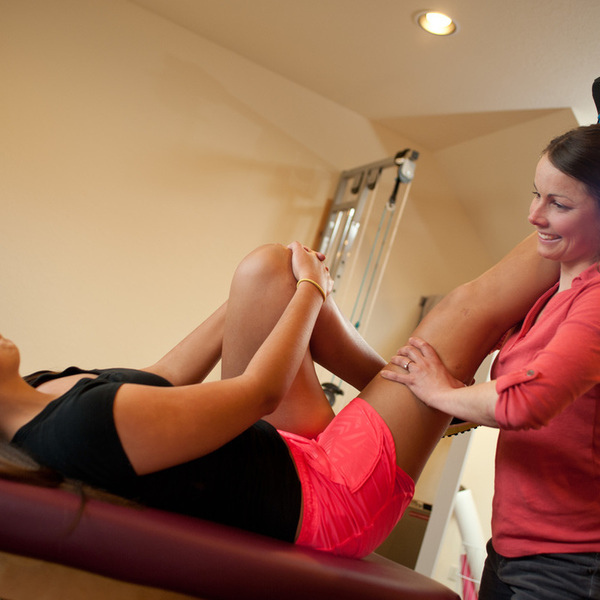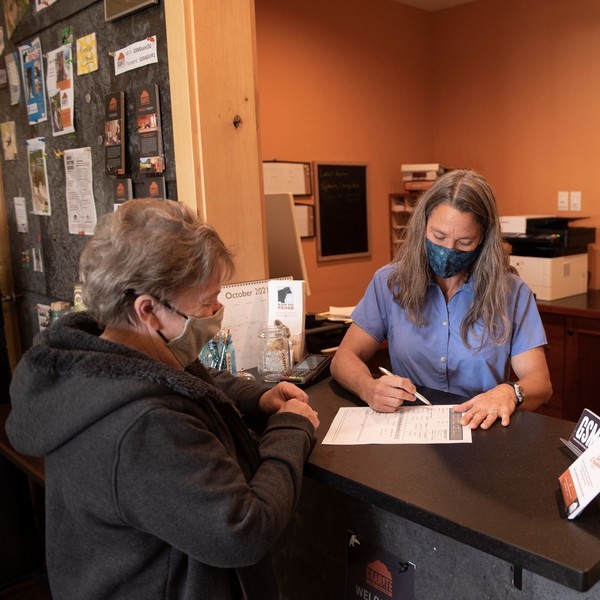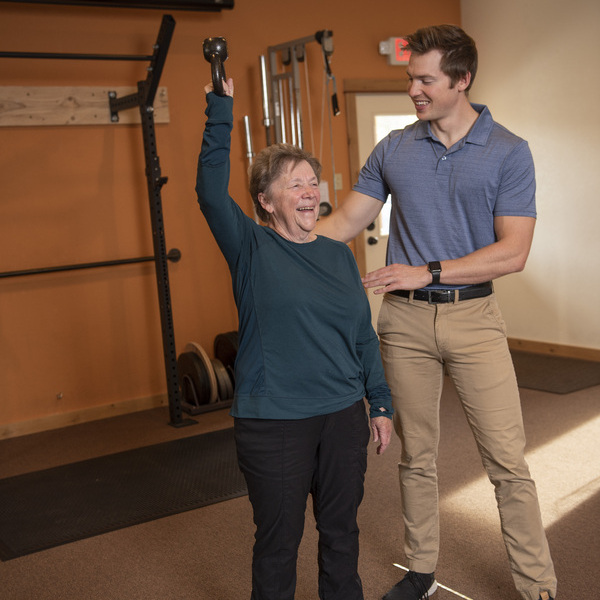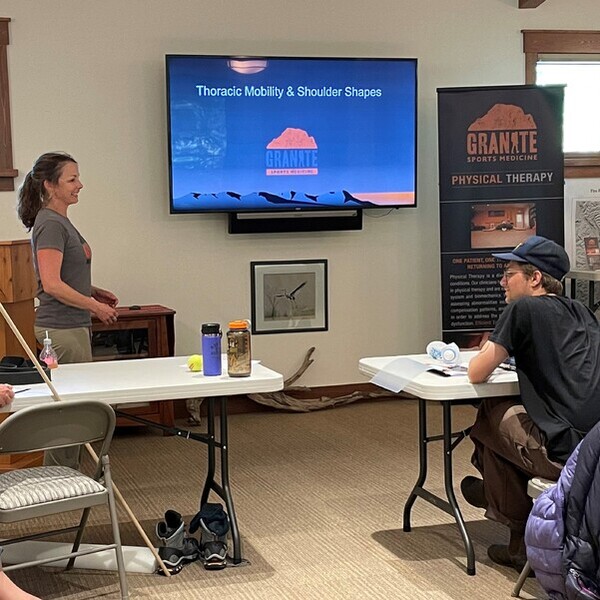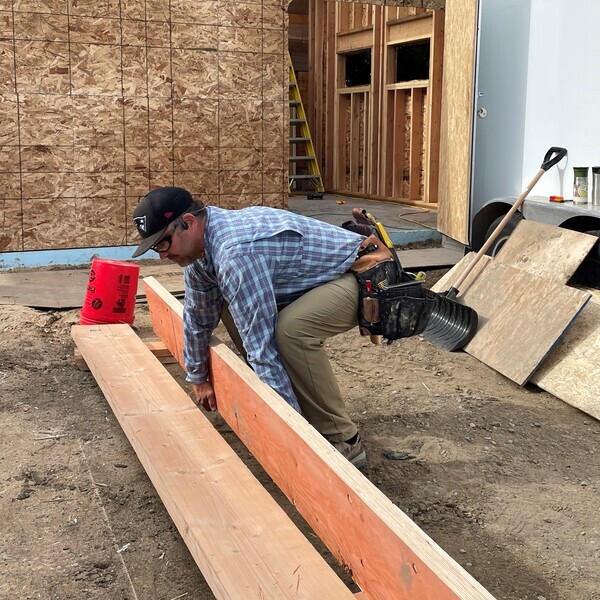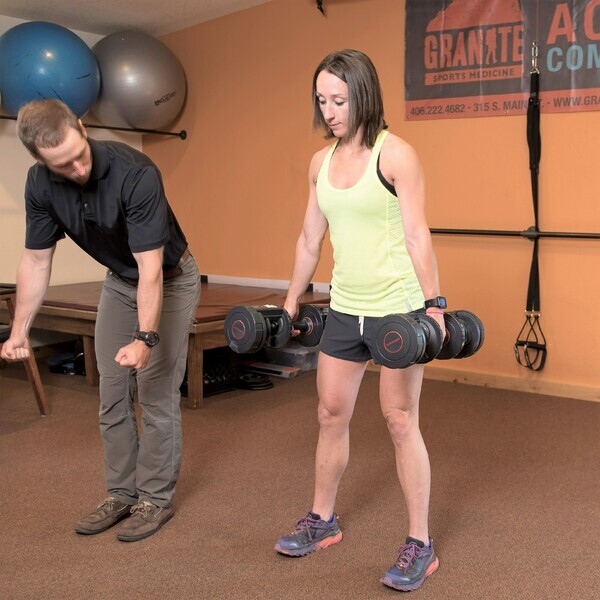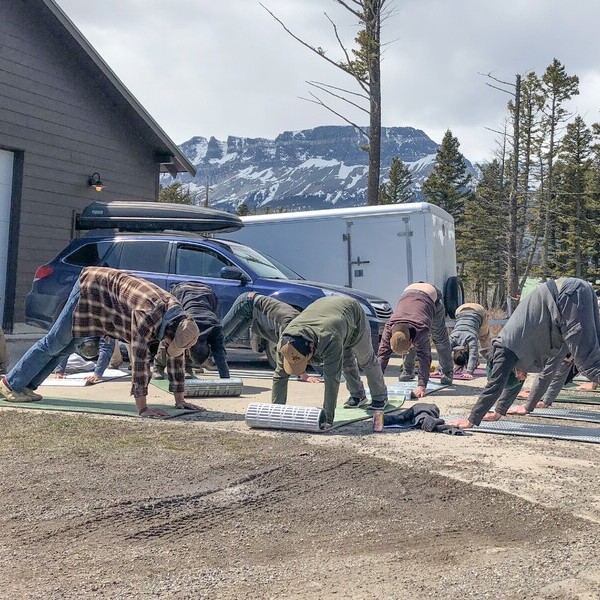 Hi, I’m Alison Shannon-Lier, a physical therapist at Granite Sports Medicine with a Doctorate in Physical Therapy, Bachelors in Rehab Science, and in 2016 I finished my Level 1 Certification in Pelvic Floor Physical Therapy. When I started talking about becoming a Pelvic Floor Physical Therapist a few years ago, people had questions. What’s a pelvic floor? It’s three layers of muscles at the base of our pelvis, directly related to bowel, bladder and sexual function. Like any group of muscles, they can be tight, weak, or dysfunctional, and cause pain. And what’s the appeal of Pelvic Floor Physical Therapy?
Hi, I’m Alison Shannon-Lier, a physical therapist at Granite Sports Medicine with a Doctorate in Physical Therapy, Bachelors in Rehab Science, and in 2016 I finished my Level 1 Certification in Pelvic Floor Physical Therapy. When I started talking about becoming a Pelvic Floor Physical Therapist a few years ago, people had questions. What’s a pelvic floor? It’s three layers of muscles at the base of our pelvis, directly related to bowel, bladder and sexual function. Like any group of muscles, they can be tight, weak, or dysfunctional, and cause pain. And what’s the appeal of Pelvic Floor Physical Therapy?
The simple answer is: there are thousands of Americans – 1 in 5 – who are underdiagnosed for pelvic floor dysfunction and are suffering in silence, people who need support and education and answers for their pain, embarrassment, and discomfort. Pelvic Floor Physical Therapy (PFPT) can help in many of these cases.
The more personal and longer answer: I suffered for years from stress incontinence through middle school and high school. It was embarrassing and frustrating. I was constantly worried about how I dressed, who I’d be with, and avoided situations that would lead to leaking. I didn’t know who to talk to, was too embarrassed to talk to my parents or friends, and dealt with it alone for years until college. In college I began to learn more about my pelvic floor in physical therapy school; about appropriate stretching and strengthening. I began self-treating and it helped some, but didn’t fully fix the problem.
When I became pregnant at age 25, I was managing my incontinence with an extensive training program, watching what I ate, and doing a lot of plyometrics with kegel exercises. But the problem came back full force when I was pregnant, leaving me frustrated and occasionally even having to change clothes at work. I was frustrated and annoyed but didn’t bring it up because I thought it was something I just had to deal with.
After I gave birth to my son, I was amazed to discover that my incontinence was gone, and has been for the last five years. I learned I wasn’t lacking strength, but that my pelvic floor muscles were too tight. The insufficiency was due to trigger points and muscle tightness, rather than weakness.
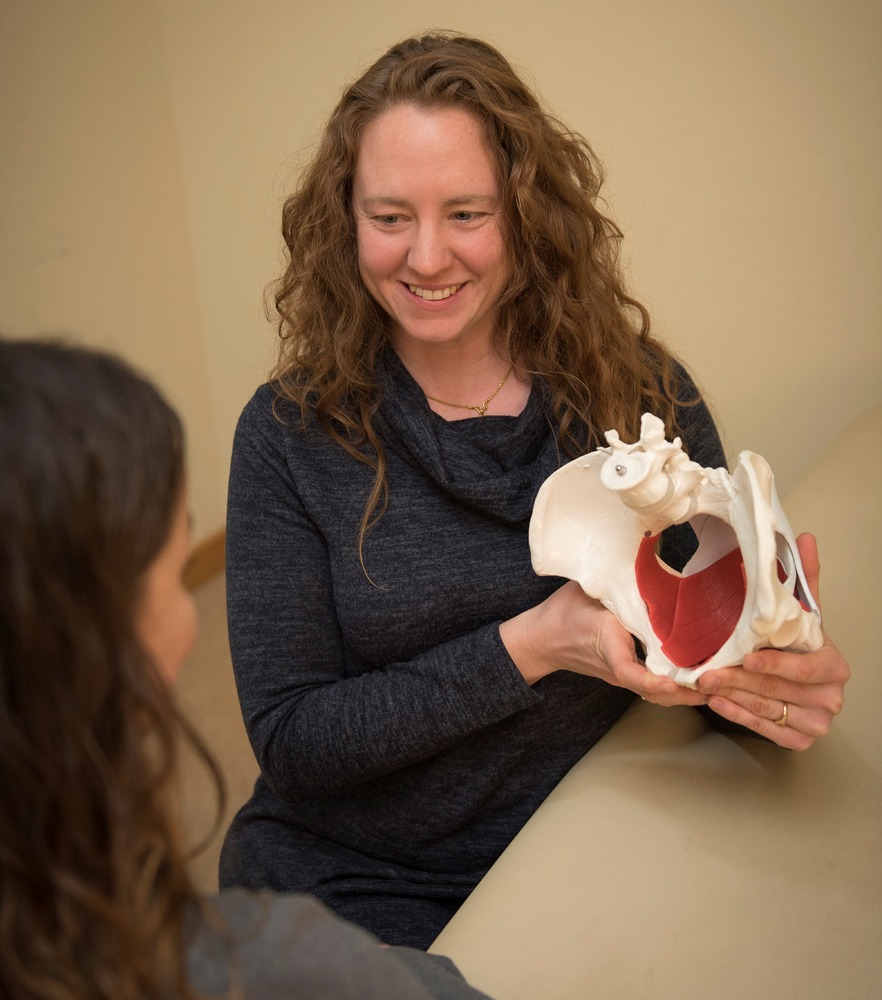 This could have been treated years ago if I had been less embarrassed and had the right information. That is what I want to provide to my community; I’m motivated to help men and women return to a normal life without anxiety when they laugh, want to jump on a trampoline with their kids or have sex with their partner. These are all things we should freely enjoy in our life and, with Pelvic Floor Physical Therapy, I can help diagnose and treat pelvic floor dysfunction so people can get these enjoyments back.
This could have been treated years ago if I had been less embarrassed and had the right information. That is what I want to provide to my community; I’m motivated to help men and women return to a normal life without anxiety when they laugh, want to jump on a trampoline with their kids or have sex with their partner. These are all things we should freely enjoy in our life and, with Pelvic Floor Physical Therapy, I can help diagnose and treat pelvic floor dysfunction so people can get these enjoyments back.
Stay tuned for my next blog to learn more about pelvic floor symptoms and treatments. We’re all excited at Granite Sports Medicine to be providing education and services in the emerging specialty of Pelvic Floor Physical Therapy! Make your appointment today here.
 Call 406 222 4682
Call 406 222 4682 Text 406 222 4682
Text 406 222 4682 Get Directions
Get Directions Instagram
Instagram  You Tube
You Tube 
